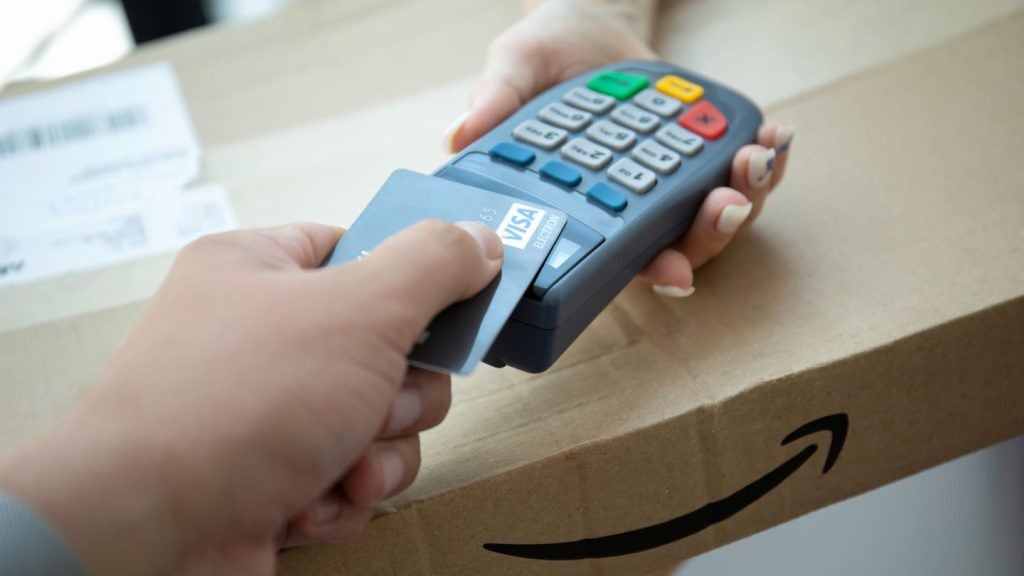(FREE) Even in countries with highly developed electronic payments
systems, cash remains a firm favourite with consumers – a situation
contactless payments hold a significant promise of changing. The
big challenge is to convince retailers of contactless payments’
benefits, payments industry participants told EPI.

Access deeper industry intelligence
Experience unmatched clarity with a single platform that combines unique data, AI, and human expertise.
Habits are hard to break especially when
as in the case of cash they have been entrenched for generations.
And while payment cards have undoubtedly eroded cash use by
consumers it remains a major factor in most countries’ payments
systems.

The precise significance of cash is difficult
to measure and data that is available is almost exclusively the
product of survey-based estimates.

US Tariffs are shifting - will you react or anticipate?
Don’t let policy changes catch you off guard. Stay proactive with real-time data and expert analysis.
By GlobalDataIn Australia, for example, a study into
payment preferences conducted in June 2007 over a two-week period
derived an estimate of cash from an observation 17,000 individual
payments. Among the study’s main conclusions was that cash remains
the most widely used payment instrument in Australia, accounting
for about 70 percent of everyday transactions in number and 38
percent in value.
The study also revealed cash was particularly
important for small transactions, accounting for nearly all
payments under A$10 ($7) and close to 90 percent of transactions
under A$25.
Indicative of the position in the US, research
firm Hitachi Consulting estimates that cash’s share of consumers’
in-store payments stood at 29 percent in 2008, down from 39 percent
in 1999. The 2008 estimate was based on a survey of 3,308 US
consumers in June 2008.
In the UK insight has been provided by the
British Retail Consortium (BRC) in its Cost of Collection
study based on 2008 data from retailers with a combined sales
turnover of £139 billion ($202 billion), over half of total UK
retail sales.
In its study, the BRC found that cash was used
in 56 percent of all transactions in 2008, down from 60 percent in
2007 but still above the 54 percent level recorded in 2006. In
retail outlets only, 33 percent of payments were with cash compared
with 34 percent in 2007 and 32 percent in 2006.
Payments services company The Logic Group
notes that in total about 20 billion cash transactions of under £10
each are undertaken in the UK annually, or about 330 transactions
per UK resident.
In other countries that have also built
reputations for a strong adoption of electronic payments, cash is
still significant in their consumer markets.
Addressing the European Parliamentary
Financial Services Forum in Brussels in April 2008 Erkki Liikanen
the governor of Finland’s central bank, the Bank of Finland noted
that in what he termed the “internationally low cash usage” Nordic
countries of Norway, Finland and Sweden cash accounted for 28
percent, 32 percent and about 37 percent of retail payments,
respectively.
“Surveys in Belgium and Holland report cash
purchases ranging between 40 percent to 50 percent of value, while
southern [European] countries show levels between 60 percent and 80
percent or even higher,” Liikanen told the forum.
The contactless
alternative
Proliferation of ATMs and cash-back
facilities at the POS have made cash easily accusable and,
generally, at no cost to the consumer.
For example, in the UK consumers
make some 3 billion free cash withdrawals annually from the 64,000
ATMs in the country’s Link ATM switching network. POS cash-backs
account for about a further 1 billion cash withdrawals.
Also notable is that, despite introduction in
2004 of EMV payment cards in 2004 which brought with them greater
security and speed at the POS, ATM withdrawals have continued to
rise steadily. According to UK payments industry body APACS the
number of transactions at ATMs increased from 2.53 billion in 2004
to 2.96 billion in 2008, a CAGR of 4 percent.
During the period the value of transactions
increased from £161.3 billion to £191.3 billion, a CAGR of 4.4
percent. The average value of withdrawals increased from £64 to £66
indicating that most cash is for normal out-of-pocket spending
requirements.
If cash use is to be reduced to any
significant extent clearly a convenient alternative is required. As
that alternative to cash contactless payments undoubtedly holds the
most promising potential.
The UK’s experience with contactless payments
dates back to 4 September 2007 with the launch by MasterCard of its
PayPass contactless debit and credit card programme in London’s
financial district.
This was followed a week later with the launch
by Barclays Bank’s Barclaycard unit of OnePulse, a Chip and PIN
credit card incorporating Visa’s payWave contactless payments
solution and the functionality of Transport for London’s Oyster
card used for contactless payments on the city’s rail and bus
network. Maximum payments for PayPass and payWave transactions are
set at £10.
Barclays has been in the forefront of
contactless payments in the UK spearheaded by the Barclaycard
OnePulse which remains the country’s only openly available
contactless payment card. By the end of 2008 some 1 million
OnePulse cards had been issued and about 8,000 retailers equipped
with Visa payWave contactless POS readers.
Barclays is continuing to back its faith in
contactless payments. From March 2009 virtually all Barclaycard
VISA debit cards issued or reissued have been equipped with payWave
technology with the bank targeting to have by year-end issued a
total of more than 3 million contactless cards.
But one player alone is unlikely to achieve
widespread adoption of contactless payments in a country with 146
million debit, credit and charge cards in issue and 1.1 million POS
terminals in use.
Interest high but adoption
low
“In the UK consumer interest in contactless
payments is high but adoption is low,” Mark McMurtrie, marketing
director of self-service banking and payment technology developer
Postilion told EPI.
“I have used contactless payments and would
like to use it more. The problem is that there are just too few
acceptance points.”
Describing the contactless payments as “a
chicken and the egg situation”, McMurtrie card issuers are waiting
until the necessary infrastructure to accept contactless payments
is in place. On the other side of the equation merchants are
waiting until there are enough contactless cards to justify an
investment in contactless accepting devices.
“Both process should be moving together,” he
stressed.
For large retailers using their own POS
equipment McMurtrie noted that the cost of contactless accepting
devices is about $150 per payment lane. This cost would fall if
contactless payments technology was incorporated during a
retailer’s POS update programme.
Echoing McMurtrie’s view, The Logic Group’s
product marketing manager Justin Schuil-Brewer said retailers’
attitude is: “What’s the point of investing in contactless payments
if there are no contactless cards?”
On a positive note Schuil-Brewer said there is
a good possibility that at least one other major UK bank will
follow Barclays’ lead.
“I believe the uptake of contactless payments
could snowball if other banks enter the market,” he added.
Another factor hindering the adoption of
contactless payments highlighted by McMurtrie and Schuil-Brewer is
the £10 maximum limit per contactless payment.
“Few Tier-1 retailers’ average shopping
baskets are under £10,” noted Schuil-Brewer.
Both McMurtrie and Schuil-Brewer believe the
£10 limit will be raised but this will only come about with the
commercialisation of mobile phone-based contactless payments. Once
this happens “mobile will become a very significant means of
paying,” said McMurtrie.
The mobile phone will also overcome consumer
security concerns, another factor holding back the adoption of
contactless payments, said Steve Edwards, business solutions
manager at payments technology vendor ACI Worldwide. Quite simply,
explained Edwards, contactless payments functionality on a mobile
phone can be switched off.
Retailers sceptical
Despite its enthusiasm for
contactless payments Barclays has no illusions that it is an
easy-sell concept.
“The implementation of contactless
payments is markedly different from that of Chip & PIN,” said
James McDonald, head of contactless payments for Barclaycard
Business at an exhibition organised by retail software specialist
Retail Solutions in London in mid-2008.
“Contactless is not mandated; it needs to
stand on its own merits,” stressed McDonald. “To do so, it needs to
break the established cycle of consumer behaviour.”
Clearly also in need of change is the attitude
of retailers which is perhaps no better reflected than in BRC’s
2008 Cost of Collection study.
“Banks are pushing new cards and payment
technologies hard. Not surprising when they stand to make so much
more in charges,” said the BRC’s director general Stephen
Robertson.
“Despite the recession, they are looking to
maximise their profits and protect their own interests at the
expense of customers who ultimately meet these costs,” he
added.
In the study the BRC highlights the cold facts
of the cost of transactions to retailers. An average cash payment
costs £0. 02, a debit card payment £0.08 and a credit card payment
a hefty £0. 35.
The BRC estimates that if charges for every
payment method were as low as they are for cash, over £800 million
in cost savings would be passed on to customers through lower shop
prices. There is little wonder that retailers are nervous about
contactless payments, as a surge in low value debit or credit card
based contactless payments would cut into their profits, said
Schuil-Brewer.
He added that there is a need for payments
service providers to work with retailers to convince them of the
benefits of contactless payments. So far, he added, retailers have
been provided with little insight into the significant return on
investment contactless payment solutions can deliver in terms of
increased brand loyalty and spending.
Cash is too cheap
Retailers for whom cash is a
low-cost payments method and consumers used to obtaining cash for
free at ATMs and POS devices can hardly be faulted for the attitude
towards non-cash payments alternatives. However, the perception
that cash is cheap or indeed free is far from reality when seen in
the context of a country’s economy as a whole.
“The social cost of cash is substantial, but
invisible to users,” stressed Leo van Hove, associate professor of
economics at the Vrij Universiteit Brussels in a speech at the
Eurofi conference held in September 2008.
He continued: “Users therefore have no
incentive to optimise their payment behaviour and as a result the
efficiency of our payment system is suboptimal”
Eurofi describes itself as “a think tank”
dedicated to the integration and efficiency of European Union’s
financial markets.
“Cash is labour intensive. Electronic payments
are simply more efficient,” stressed van Hove.
However, he added that because consumers
withdrawing cash faced no charges it was perceived as being
free.
“And we all know what happens with services
that are free of charge: they are overused,” said van Hove.
He continued: “Crucially, the current pricing
structure also makes life more difficult for novel, more efficient
payment instruments. It is difficult to charge a correct price for,
say, contactless or mobile payments when the main competitor, cash,
is subsidised. “
Van Hove pointed to studies by central banks
in which they calculated the cost of cash at between 0.48 percent
and 0.58 percent of GDP.
“Perhaps more telling is that according to the
Dutch central bank, the social cost of cash would amount to around
€300 per family per year—which is actually an excellent way of
looking at it, because the cost of cash is indeed ultimately paid
by consumers,” he stressed.
“If I had my way, next time you go to an ATM
there would be a message appearing on the screen stating: ‘This
withdrawal will cost you 25 euro cents, or one euro, depending on
the amount.’ There would be no free cash anymore” proclaimed van
Hove.
But despite the logic of van Hove’s argument
cash will undoubtedly be around for a long time to come. “I suspect
it will take 10 to 15 years for cash [in the UK] to become a
minority payments means,” commented Schuil-Brewer.
Indeed the complete disappearance of cash may
not be to the benefit of society. Notably, in a speech delivered in
May 2008 by Lars Nyberg the deputy governor of the Riksbank,
Sweden’s central bank, he highlighted that research by the bank
revealed that for very small payments cash is more socially
cost-efficient than cards.
Based on 2002 data the Riksbank found that it
was most cost-efficient to pay in cash for purchases amounting up
to about SEK70 ($8). Above this, card payments were always
preferable.







